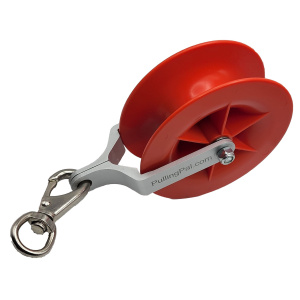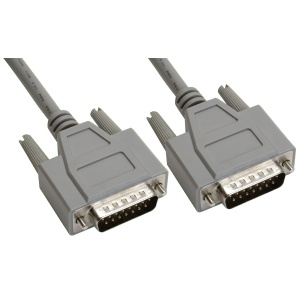Introduction
Understanding the nuances of data communication technology isn’t just a matter of bits and bytes. It’s about digging deeper into the components that make it possible to connect your device to the world. An essential yet often overlooked component of this vast network are transceivers. This article will illuminate the differences between singlemode and multimode transceivers, the fiber optics superheroes enabling fast and efficient data transmission. So, buckle up and prepare for a ride into the realm of light and fiber!
What is the Difference Between Singlemode and Multimode Transceivers?
A burning question often arises in the realm of data communication: What is the difference between singlemode and multimode transceivers? Both play pivotal roles in the functioning of our interconnected world, yet their mechanisms and applications significantly differ.
What Are Transceivers?
Transceivers, derived from “transmitter” and “receiver,” are devices that perform both functions simultaneously. They transmit and receive data in the form of light signals, playing a vital role in optical fiber communication. Now, how do these transceivers differ in singlemode and multimode formats?
Singlemode Transceivers: Riding Solo
As the name suggests, singlemode transceivers allow a single mode of light to pass through the fiber. They employ laser light to transmit signals, and due to their narrow core, they prevent light signals from spreading out. This makes singlemode transceivers perfect for high-speed data transmission over long distances.
Multimode Transceivers: Harnessing Multiple Paths
In contrast, multimode transceivers permit multiple light paths within a larger core. Using LED sources, these transceivers bounce light signals within the fiber, making them ideal for short distances and high-bandwidth applications.
Singlemode Vs Multimode: The Crucial Differences
It all boils down to core size, transmission distance, data rate, cost, and signal dispersion. Singlemode transceivers provide longer reach and higher data rates but are generally more expensive due to their laser technology. On the other hand, multimode transceivers are cost-effective for shorter reach applications, providing high data rates within restricted spaces.
Understanding Fiber Optics
To comprehend the difference between singlemode and multimode transceivers, it’s vital to delve into the heart of fiber optic technology. Let’s unravel the mystery of light, refraction, and fiber!
The Magic of Light in Data Transmission
Fiber optic technology exploits the properties of light to transmit data at the speed of light (pun intended!). By converting electrical signals into light, transceivers enable incredibly fast and efficient data transfer.
The Power of Refraction
Refraction, the bending of light as it passes from one medium to another, is the secret sauce that makes fiber optic technology tick. By exploiting this principle, fiber optics confine the light within the fiber, ensuring that the signal reaches its destination.
Fiber Cores: Where the Action Takes Place
The fiber core, enveloped by a layer called cladding, is where all the action happens. It is within this core that light signals travel. The size of the core varies, giving rise to singlemode fibers (with narrow cores) and multimode fibers (with wider cores).
Digging Deeper into Singlemode Transceivers
Singlemode transceivers are marvels of optical engineering. Let’s dive into their key characteristics, applications, and benefits.
Key Characteristics of Singlemode Transceivers
With a narrow core size (around 9 microns), singlemode fibers permit just one mode of light, enabling it to travel straight down the fiber without bouncing. This leads to low signal attenuation and minimal dispersion, making these transceivers ideal for long-distance transmission.
Applications of Singlemode Transceivers
From telecommunications to CATV, singlemode transceivers are the workhorses powering long-haul data transfer. They’re found in internet service provider networks, data centers, and even in submarine communication cables!
Benefits of Singlemode Transceivers
While pricier than their multimode counterparts, singlemode transceivers offer superior performance over long distances. They allow for higher data rates and greater signal integrity, delivering superior quality transmission.
Exploring the World of Multimode Transceivers
Multimode transceivers are another important part of the optical communication ecosystem. Let’s shed some light on their key features, uses, and advantages.
Key Characteristics of Multimode Transceivers
Multimode transceivers have a larger core size (up to 100 microns), permitting multiple light paths. The signals bounce off the walls of the fiber, leading to signal dispersion. This limits the transmission distance but allows for high data rates over short distances.
Applications of Multimode Transceivers
You’ll often find multimode transceivers in local area networks (LANs), data centers with short connection lengths, and digital and analogue CCTV systems. They’re the go-to choice for applications where distance is not a significant factor.
Benefits of Multimode Transceivers
The principal advantage of multimode transceivers is their cost-effectiveness for short-reach applications. They also allow for high data rates within a confined area, making them ideal for environments like data centers.
FAQs: Demystifying Singlemode and Multimode Transceivers
Q: What is the primary difference between singlemode and multimode transceivers? A: The main difference lies in the core size of the fibers they use and the light paths they permit. Singlemode transceivers use a narrow core to transmit a single light path over long distances, while multimode transceivers use a wider core to transmit multiple light paths over short distances.
Q: Which is more expensive: a singlemode or multimode transceiver? A: Singlemode transceivers are typically more expensive due to their advanced laser technology and ability to transmit data over long distances.
Q: Are singlemode transceivers better than multimode transceivers? A: It’s not about better or worse; it’s about what suits your specific application. For long-distance, high-speed data transmission, singlemode transceivers are a superior choice. For short-distance, high-bandwidth applications, multimode transceivers are more appropriate.
Q: Can I use a singlemode transceiver in place of a multimode transceiver, or vice versa? A: Generally, no. Singlemode and multimode fibers and transceivers are not interchangeable due to their different core sizes and operating principles. Using one in place of the other can lead to significant performance issues.
Q: Which type of transceiver should I use for my home network? A: For most home networks, multimode transceivers are sufficient as they can handle high data rates over the shorter distances typical in a home environment.
Q: What’s the maximum distance I can achieve with singlemode and multimode transceivers? A: Singlemode transceivers can transmit data up to 100 kilometers without requiring a signal repeater. On the other hand, multimode transceivers typically offer a range between 300 to 500 meters, depending on the specific data rate and type of multimode fiber.
Conclusion
So, what is the difference between singlemode and multimode transceivers? As we’ve explored, it boils down to their core size, the light paths they allow, the distances they cover, and the applications they best serve. Singlemode transceivers, with their narrow cores and single light paths, are masters of long-distance, high-speed data transmission. Multimode transceivers, on the other hand, rule the roost when it comes to short-distance, high-bandwidth scenarios.
Both play crucial roles in our interconnected world, enabling everything from the Internet that we can’t imagine life without, to the corporate networks that businesses rely on, and the burgeoning world of data centers that power our digital lives. They’re two sides of the same coin, integral to the world of fiber optics, and understanding their differences is key to making informed choices in the realm of data communication.
Whether you’re setting up a home network, designing a data center, or planning a long-haul communication link, understanding the difference between singlemode and multimode transceivers is vital. Choose wisely, and let the power of light guide your data to its destination!












